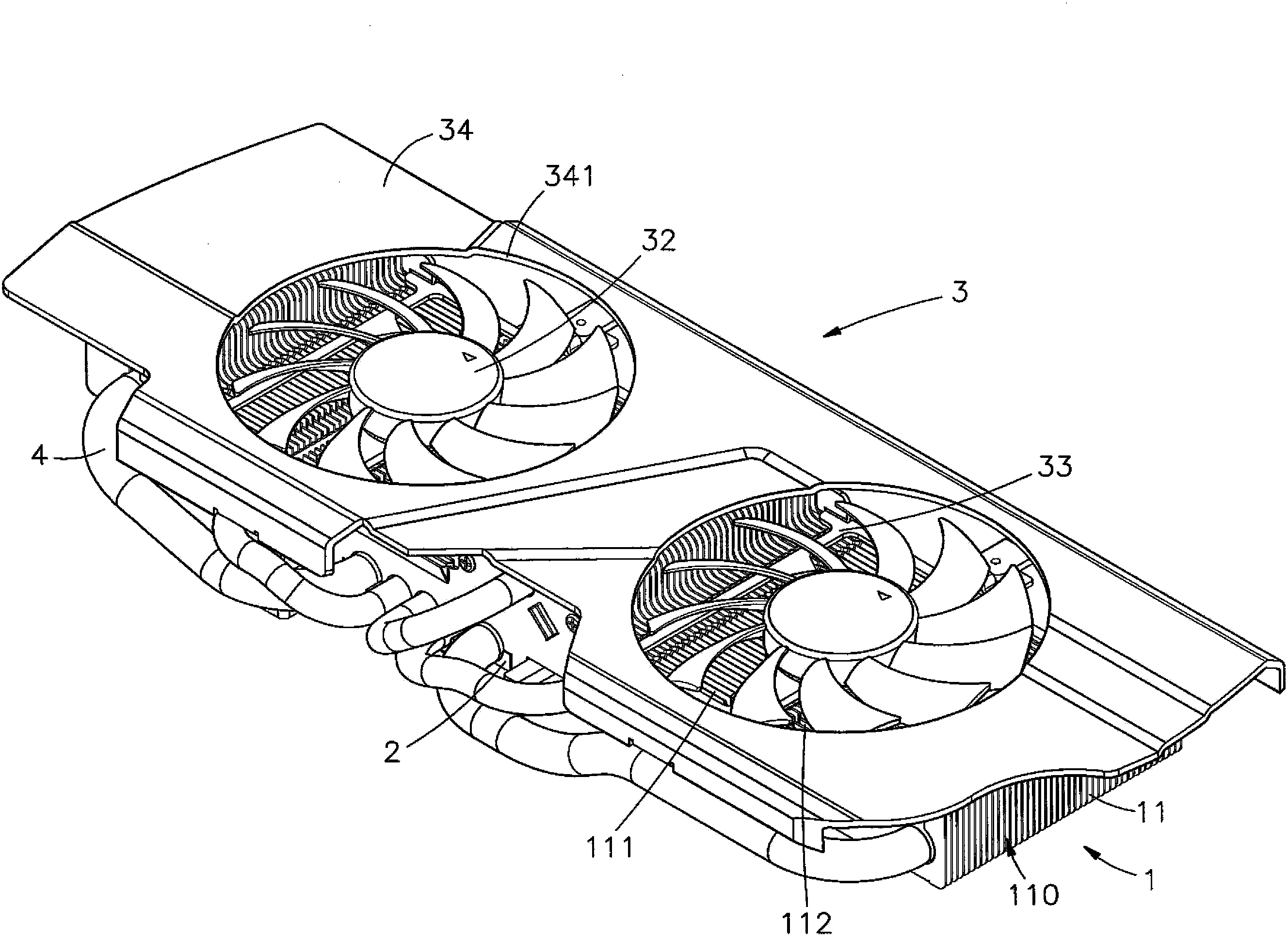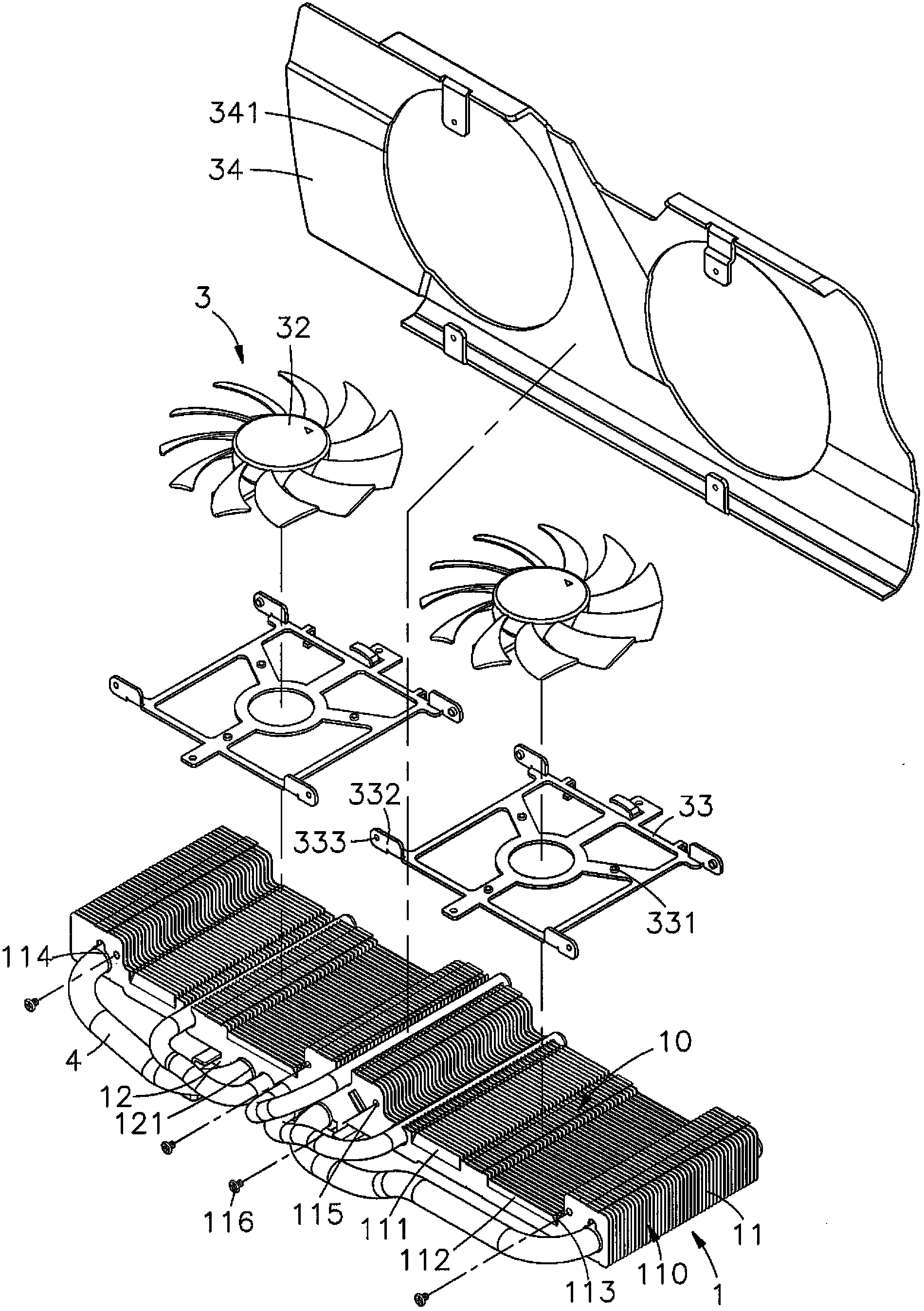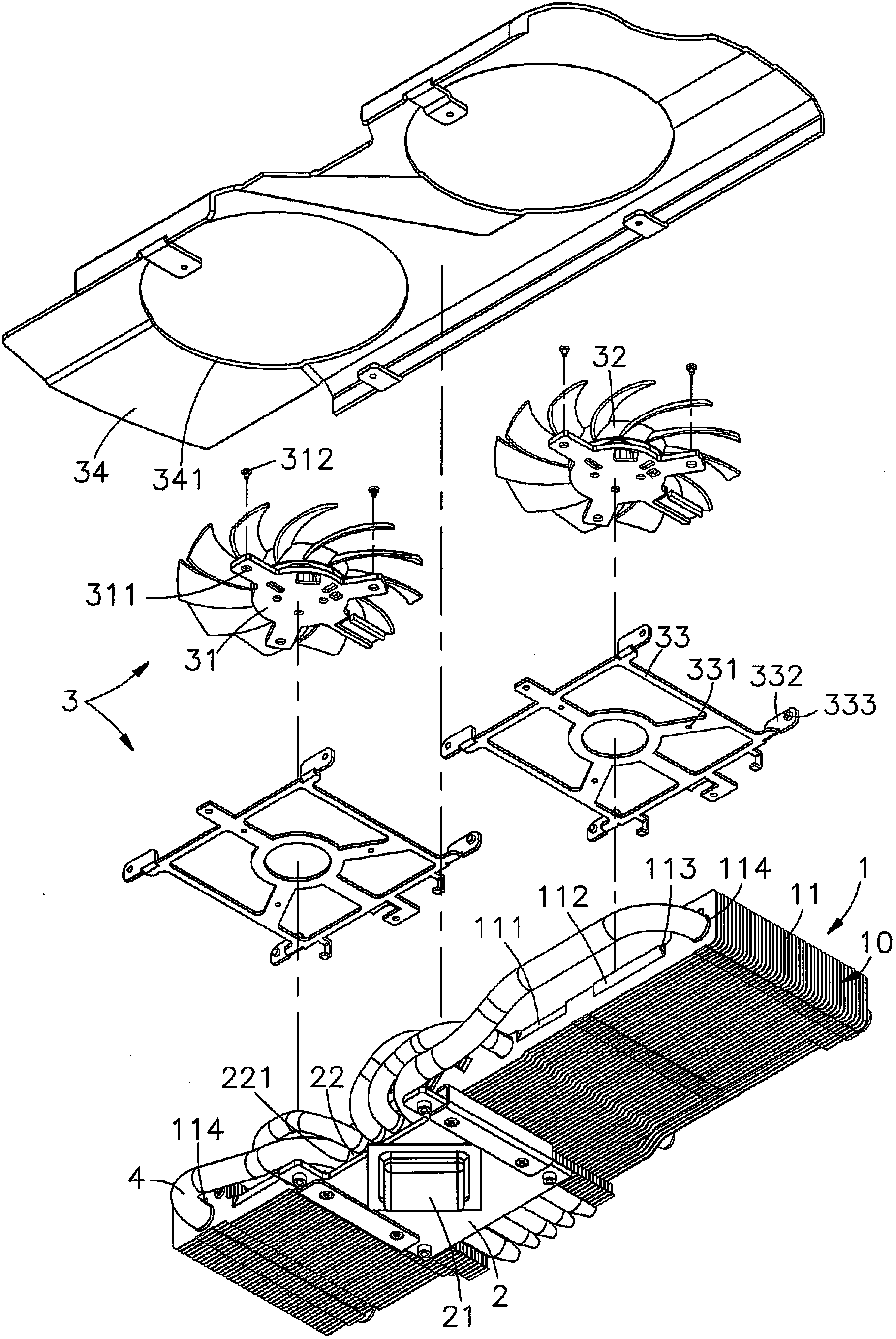Radiator
A heat dissipation device and heat sink technology, which is applied in cooling/ventilation/heating transformation, instruments, electrical digital data processing, etc., can solve the problem of poor heat dissipation effect, poor heat dissipation efficiency, and inability to effectively utilize the heat dissipation area of heat sink A, etc. problems, to achieve the effect of reducing noise, reducing wind resistance, and increasing air volume
- Summary
- Abstract
- Description
- Claims
- Application Information
AI Technical Summary
Problems solved by technology
Method used
Image
Examples
Embodiment Construction
[0026] In order to achieve the above-mentioned purpose and effect, the technical means and the structure adopted by the present invention are hereby illustrated in detail with respect to the preferred embodiments of the present invention. The features and functions are as follows for a complete understanding.
[0027] see figure 1 , figure 2 , image 3 , Figure 4 , Figure 5 As shown, they are respectively the three-dimensional appearance diagram, the three-dimensional exploded view, the three-dimensional exploded view of another angle of view, the three-dimensional exploded view of the heat sink and the side sectional view of the present invention. It can be clearly seen from the figure that the present invention includes a heat dissipation Sheet 1, heat sink 2 and fan 3, so the main components and features of the present invention are described in detail as follows, wherein:
[0028] The heat sink 1 has a plurality of fins 11 arranged at intervals, and at least one re...
PUM
 Login to View More
Login to View More Abstract
Description
Claims
Application Information
 Login to View More
Login to View More - R&D
- Intellectual Property
- Life Sciences
- Materials
- Tech Scout
- Unparalleled Data Quality
- Higher Quality Content
- 60% Fewer Hallucinations
Browse by: Latest US Patents, China's latest patents, Technical Efficacy Thesaurus, Application Domain, Technology Topic, Popular Technical Reports.
© 2025 PatSnap. All rights reserved.Legal|Privacy policy|Modern Slavery Act Transparency Statement|Sitemap|About US| Contact US: help@patsnap.com



